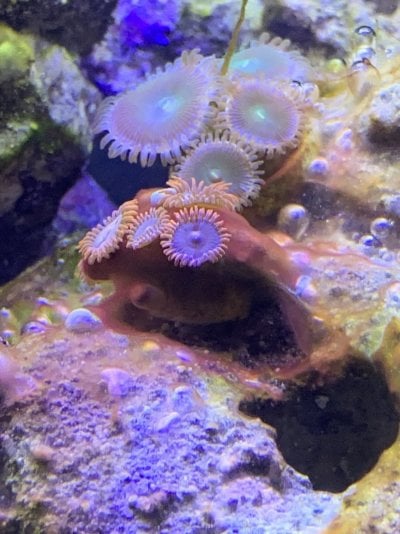Could anyone help to identify what this is? It’s covering my zoas and I’m scared it’s killing them!
-15 gallon
-cleaner shrimp, Randall’s pistol shrimp
-pink streaked wrasse, Yasha goby
-strawberry conch, nassarius, trochus
-3 zoas, 1 leather, 1 mushroom, 1 Xenia and 1 Duncan
-tank is 3 months old
-ammonia 0
-nitrate 6
-Phosphate 0.03
-Kh 9
(if you need any tank info just ask)

-15 gallon
-cleaner shrimp, Randall’s pistol shrimp
-pink streaked wrasse, Yasha goby
-strawberry conch, nassarius, trochus
-3 zoas, 1 leather, 1 mushroom, 1 Xenia and 1 Duncan
-tank is 3 months old
-ammonia 0
-nitrate 6
-Phosphate 0.03
-Kh 9
(if you need any tank info just ask)















